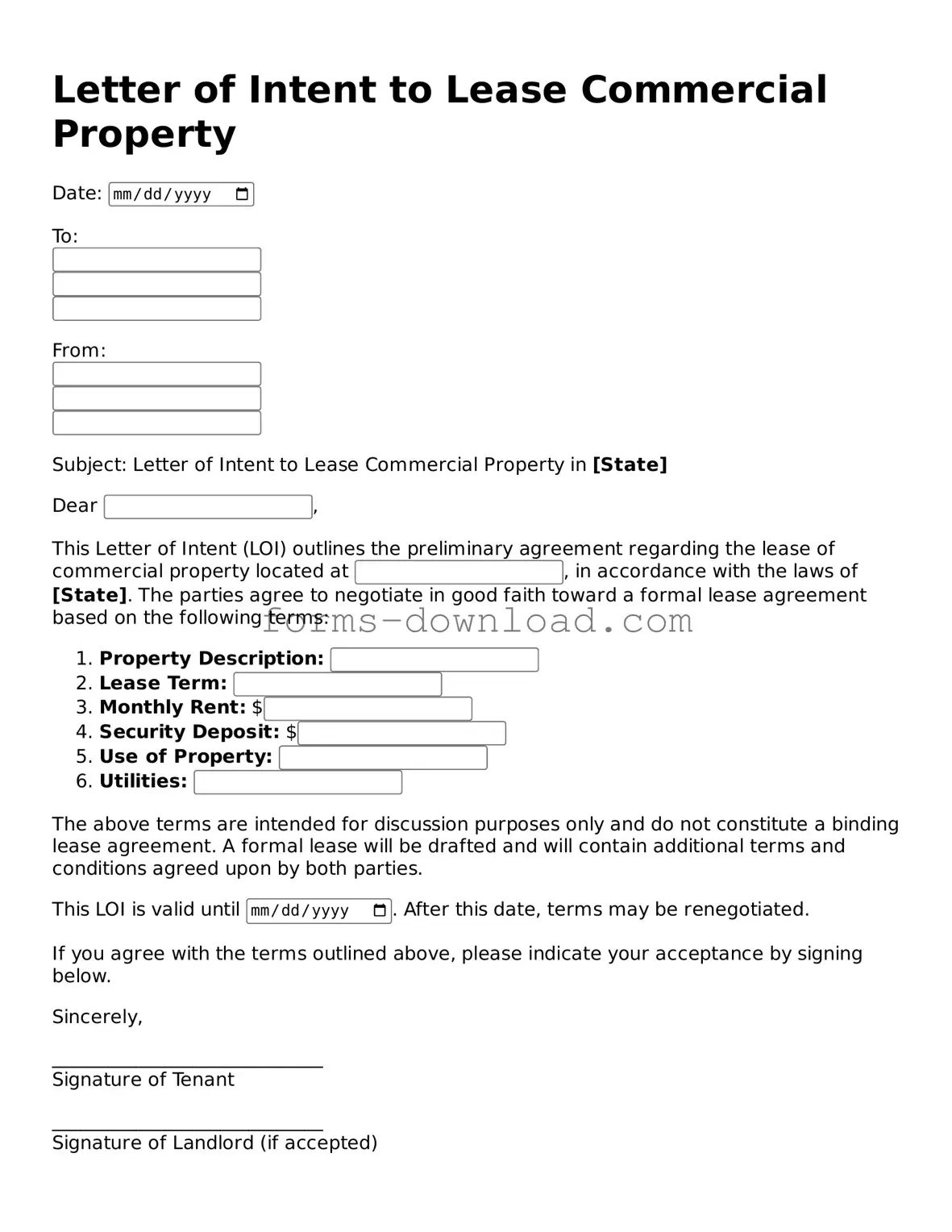Fillable Letter of Intent to Lease Commercial Property Form
A Letter of Intent to Lease Commercial Property is a preliminary document outlining the terms and conditions that a potential tenant and landlord agree upon before finalizing a lease agreement. This form serves as a foundation for negotiations, helping both parties clarify their intentions and expectations. To get started on your leasing journey, fill out the form by clicking the button below.
Launch Editor Now
